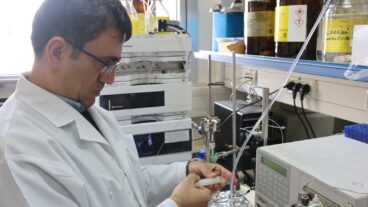GE’s medical imaging devices help doctors detect the presence of cancer tumors and determine their location and size.U.S.-based multinational conglomerate General Electric is making medical systems in Israel using Israeli technology to diagnose diseases such as cancer and heart disease faster and more accurately.
GE’s roots in Israel go way back. The company established a subsidiary there in 1950 as one of the first U.S. companies to operate in Israel when it was a new state. Since then, GE has helped build the basic energy infrastructure of the country by manufacturing and installing oil- and coal-fired turbines to produce electricity.
GE has branched out into producing aircraft engines, plastics and lighting in Israel and has evolved to create medical imaging technology to diagnose cancer and cardiovascular problems. GE’s largest presence in Israel – GE Medical Systems – is the nucleus of its medical imaging business that employs more than 350 workers in Haifa, Israel.
GE Medical Systems is headquartered in Milwaukee, Wis., and sells products to hospitals, private clinics and research institutions in the United States and worldwide with annual sales of $8 billion.
GE stays on top of imaging technology by drawing on research and talent from major Israeli universities and medical schools. This relationship encourages a quick exchange of ideas between academia and industry that benefit Israel’s medical community, GE’s development cycle and ultimately the patient.
GE’s latest innovation in medical imaging systems, the Hawkeye, was developed in Israel by GE with collaboration from Rambam Hospital in Haifa. The Hawkeye is the first system to combine nuclear medicine, which shows metabolic function, and low-dose computed tomography, which shows anatomy.
By combining two tests into one, doctors can make life-saving diagnoses of cancers and other diseases in a single exam in less than half the time of traditional imaging procedures.
Based on the technology of the Hawkeye, the Discovery LS precisely locates cancers better than any other available technology. The system can identify whether the patient has cancer, and the location and size of the cancer, allowing doctors to choose the optimal treatment.
Like the combination of weather radar and a map, the Discovery fuses information from two systems, CT and PET scans, to pinpoint activity and location into one image.
To date the system is being used in 75 hospitals and clinics, with the majority in the United States. The first sites were Johns Hopkins University in Baltimore, Rambam Hospital and the University of Zurich in Switzerland.
In the late 90s, Israel became the powerhouse behind the development of GE Medical’s technology. GE also acquired Haifa-based Elscint and invested in Haifa-based Imarad’s solid-state imaging technology. The plan was to incorporate the technology of the two companies into manufacturing gamma cameras, nuclear imaging and PET products.
For early diagnosis of heart disease, GE Medical in Israel has developed an ultrasound system, the Vivid 3, that gives a clear picture of the heart allowing doctors to see how the heart muscle is functioning. One-quarter of the units manufactured in Israel are shipped to clinics and hospitals in the United States.
Managing Director Tovi Bachar, a former vice president of Elscint, said that GE is looking forward to a long-term partnership with Israel businesses and technologies to give Americans and others worldwide better health care.












